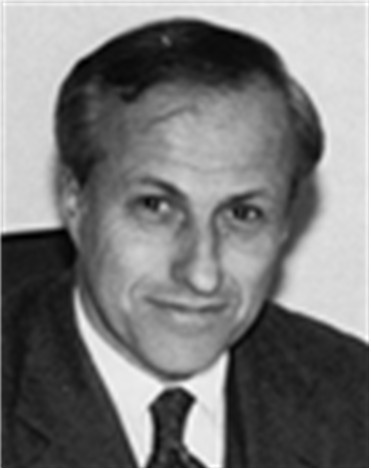- unknown (b.)
Bio/Description
The founder and longtime head of the computer firm AGS, a programming services firm that grew from acquisitions into a range of areas including packaged software and microcomputer distribution. He spent 20 years on the ADAPSO board and has the unique distinction of having served as head of three of its sections: Software Products, Professional Services, and Information Systems Integration. He served ADAPSO in many capacities from the late 1970s into the 1990s, including a term as its chair. He was influential in developing and negotiating the association?s positions on financial and accounting issues. He grew up in the Bronx, the only child of a family of teachers. He graduated from the University of Pennsylvania in 1953, and was drafted into the army, serving for two years in New Mexico with the US Army Signal Corps. During this time he had his first exposure to computing. Upon his release from the army, he attended Wharton where he studied intensively and earned an MBA in one year. He then applied to IBM and, on the basis of its celebrated aptitude test, was assigned to work as a programmer in its midtown Manhattan head- quarters. He threw himself into the arena of early computing, writing systems routines for the large IBM 700 series vacuum tube machines. His next job was with the Litton Industries conglomerate, then attempting to compete in the low-end computer market with its Monrobot which required skilled low-level programming, but because Litton did the work necessary to tailor the machines to specific tasks, he was now brought into contact with customers and business systems analysis for the first time. In 1961, he went to work in the New York offices of the Computer Sciences Corporation; then focused on systems software development for computer manufacturers. The New York office did not thrive and was closed down two years later. Work as a subcontractor for John Diebold, a principal in an unsuccessful systems software startup, and as a community college computer science department chairman followed in creation of AGS Computers in 1967, with Joe Abrams, a fellow resident in his New Jersey apartment complex. The name stood for Abrams, Graf, and Schoenberg although Graf was not involved with the company?s work. For a while the firm struggled to attract consulting business, picking up some jobs such as an early containerization project for U.S. Lines. Reaching potential customers was a real challenge, which the partners attempted to address by running technical seminars for the data processing directors of New York companies. He believes that by 1970 it had around 20 employees and revenues of approximately a million dollars a year. In 1969 it made a small initial public offering, joining other computer services firms during the ?go go years? for computer company stocks. At the beginning of the 1970s, AGS attempted to enter the emerging market for packaged software. This met with little success, though some products, including a report generator and test system, were used within AGS, or formed the basis for repeated sales of applications in related areas. The packaged software initiative, and a number of other ventures into areas, such as optical scanning and training, fell victim to the recession of 1970?1971, which wiped out many of AGS?s larger competitors. When growth resumed in 1972, AGS began to diversify into new areas of business. It developed a niche in back-office systems for brokerage firms and tackled other administrative projects for banks and communications companies. Continuing its involvement in system software, the firm engaged in security-related operating systems projects for IBM and systems projects for Bell Labs. He lived in Murray Hill, New Jersey, close to Bell Labs, which became his biggest customer. He suggests that the firm ?did a lot of the original Unix development? under contract, and that AGS at one point employed hundreds of programmers working on the system. By the end of the 1970s, the firm had 300 employees and revenues of around $14 million. AGS entered ADAPSO in early 1974, with him as its representative. His first recorded role within the organization came in 1977, when he served as one of four members of a new Organization Committee chartered to find solutions to the association?s perennial problems of sectional structure, board organization, and fractionalism. From 1978 onward he was a fixture of the association?s committees and leadership. In 1978 alone he was a director of ADAPSO, chair of its Membership Committee, and Vice President of its Software Industry Association section (representing suppliers of packaged software and programming services). In 1979, he was ADAPSO treasurer and president of the Software Industry Association, and during the 1980s he served numerous terms as a Director of the association and chaired many of its committees. He became Chairman of the Board and Chief Executive Officer of ADAPSO (a new name for its president) in 1982. During the 1970s, he worked to bring more professional services firms into the association, feeling that he and his competitors had sufficient common ground to make shared action on topics such as state sales taxation a sensible strategy. These efforts culminated in the creation of a Professional Services section, of which he became the first President. According to him, the original project of this section was to defeat an attempt by New York State to tax computer services. Energized by success on this topic, the new section addressed a number of other issues, including software capitalization, competition from public accounting firms, and other accounting and tax issues. The section was also active on labor issues such as the classification of programmers
-
Gender:
Male -
Noted For:
Served as head of three sections of ADAPSO: Software Products, Professional Services, and Information Systems Integration -
Category of Achievement:
-
More Info:


